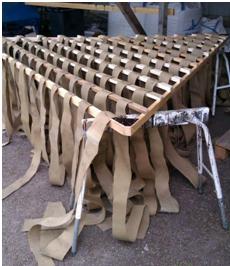Treatment 1

An artificial kelp construction was built by assembling three 3 m long wooden planks to a triangular frame, on which additional laths were added on which the artificial kelp to be attached.
The seals were tested once or twice a day, once in the morning between 9:30 and 12:00 and once in the afternoon between 1:00 and 3:00, 3-7 days a week for a total of 21 sessions with live fish and 21 sessions with dead fish. The sessions were almost equally spread over morning and afternoons. In each session 6-7 live fish were used and 3-4 dead fish cut into smaller pieces.
The behaviour of the seals in the vicinity of the artificial kelp was recorded by a video camera placed at one of the lower underwater viewing panels. The camera was started before and continued to record for the entire session. The pump was started and when all the air had been cleared from the hose, the T-connection could be opened for 1-2 fish to be inserted. After flushing down the fish, the pump was shut off and then turned on again for the next fish to be flushed down into the kelp. Each session consisted of 5 flushes. All flushes in a session contained the same category of fish, either live or dead. The same category of fish was used both in the morning and in the afternoon of the same day. Sometimes no fish was flushed to add an element of uncertainty to the treatment and this was one to two flushes in each session, usually the second and forth flush. When the session was finished, the camera was shut off, most often after 13-15 minutes.
Responsible for this page:
Director of undergraduate studies Biology
Last updated:
05/18/14
